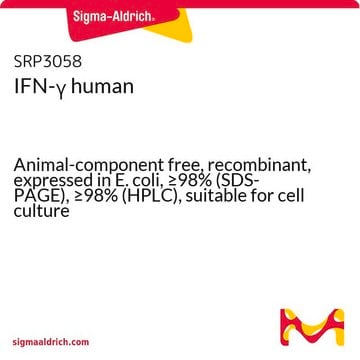추천 제품
생물학적 소스
Escherichia coli (O111:B4)
Quality Level
결합
FITC conjugate
형태
lyophilized powder
라벨링 범위
2-10 μg FITC per mg LPS
색상
yellow to orange
solubility
H2O: soluble 4.90-5.10 mg/mL, faintly hazy to hazy, pale yellow to yellow
저장 온도
2-8°C
유사한 제품을 찾으십니까? 방문 제품 비교 안내
애플리케이션
FITC-Lipopolysaccharides (FITC-LPS) may be used to study processes such as the movement/transport of LPS across tissue barriers such as the colonic epithelium and cellular binding and internalization of lipopolysaccharides with fluorescence-based assay systems. It may be used to evaluate, qualify and quantify lipopolysaccharides (LPS) removal reagents and procedures. FITC-LPS conjugate may be used for the detection of LPA binding proteins and motifs.
Lipopolysaccharides (LPSs) are characteristic components of the cell wall of Gram-negative bacteria. LPS and its lipid A moiety stimulate cells of the innate immune system by the Toll-like receptor 4 (TLR4), a member of the Toll-like receptor protein family, which recognizes common pathogen-associated molecular-patterns (PAMPs).
생화학적/생리학적 작용
Lipopolysaccharides (LPS) are localized in the outer layer of the membrane and are, in noncapsulated strains, exposed on the cell surface. They contribute to the integrity of the outer membrane, and protect the cell against the action of bile salts and lipophilic antibiotics.
제조 메모
The product is soluble in water (5 mg/ml) yielding a hazy, yellow to orange solution. Lipopolysaccharides are molecules that form micelles in every solvent. Hazy solutions are observed in water and phosphate buffered saline. Organic solvents do not give clearer solutions. Methanol yields a turbid suspension with floaters, while water yields a homogeneously hazy solution. For cell culture use, LPS should be reconstituted by adding 1 ml of sterile balanced salt solution or cell culture medium to a vial (1 mg) and swirling gently until the powder dissolves. Solutions can be further diluted to the desired working concentration with additional sterile balanced salt solutions or cell culture media.
기타 정보
To gain a comprehensive understanding of our extensive range of lipopolysaccharides for your research, we encourage you to visit our Carbohydrates Category page.
관련 제품
제품 번호
설명
가격
신호어
Danger
유해 및 위험 성명서
Hazard Classifications
Acute Tox. 2 Oral
Storage Class Code
6.1A - Combustible acute toxic Cat. 1 and 2 / very toxic hazardous materials
WGK
WGK 3
Flash Point (°F)
Not applicable
Flash Point (°C)
Not applicable
개인 보호 장비
Eyeshields, Gloves, type N95 (US)
시험 성적서(COA)
제품의 로트/배치 번호를 입력하여 시험 성적서(COA)을 검색하십시오. 로트 및 배치 번호는 제품 라벨에 있는 ‘로트’ 또는 ‘배치’라는 용어 뒤에서 찾을 수 있습니다.
이미 열람한 고객
Yannick Boege et al.
Cancer cell, 32(3), 342-359 (2017-09-13)
Concomitant hepatocyte apoptosis and regeneration is a hallmark of chronic liver diseases (CLDs) predisposing to hepatocellular carcinoma (HCC). Here, we mechanistically link caspase-8-dependent apoptosis to HCC development via proliferation- and replication-associated DNA damage. Proliferation-associated replication stress, DNA damage, and genetic
Amit Kumar et al.
Scientific reports, 7, 39925-39925 (2017-01-05)
To become clinically effective, antimicrobial peptides (AMPs) should be non-cytotoxic to host cells. Piscidins are a group of fish-derived AMPs with potent antimicrobial and antiendotoxin activities but limited by extreme cytotoxicity. We conjectured that introduction of cationic residue(s) at the
Bin Li et al.
International journal of molecular sciences, 15(1), 1143-1161 (2014-01-21)
Innate immunity is the first line of defense in human beings against pathogen infection; monocytes/macrophages are the primary cells of the innate immune system. Recently, macrophages/monocytes have been discovered to participate in LPS clearance, and the clearance efficiency determines the
Saurabh Srivastava et al.
Antimicrobial agents and chemotherapy, 57(6), 2457-2466 (2013-03-13)
Temporin L (TempL) is a 13-residue frog antimicrobial peptide that shows moderate bactericidal activity and antiendotoxin properties in macrophages. We envisioned that, due to its very hydrophobic nature, the peptide might fail to show its desired biological properties. It was
Up-regulated TLR4 in cardiomyocytes exacerbates heart failure after long-term myocardial infarction.
Li Liu et al.
Journal of cellular and molecular medicine, 19(12), 2728-2740 (2015-08-21)
It remains unclear whether and how cardiomyocytes contribute to the inflammation in chronic heart failure (CHF). We recently reviewed the capacity of cardiomyocytes to initiate inflammation, by means of expressing certain immune receptors such as toll-like receptors (TLRs) that respond
문서
Explore the structure, function, and diverse applications of Lipopolysaccharides. Discover their role in bacteria, serological specificity, and research potential.
자사의 과학자팀은 생명 과학, 재료 과학, 화학 합성, 크로마토그래피, 분석 및 기타 많은 영역을 포함한 모든 과학 분야에 경험이 있습니다..
고객지원팀으로 연락바랍니다.




